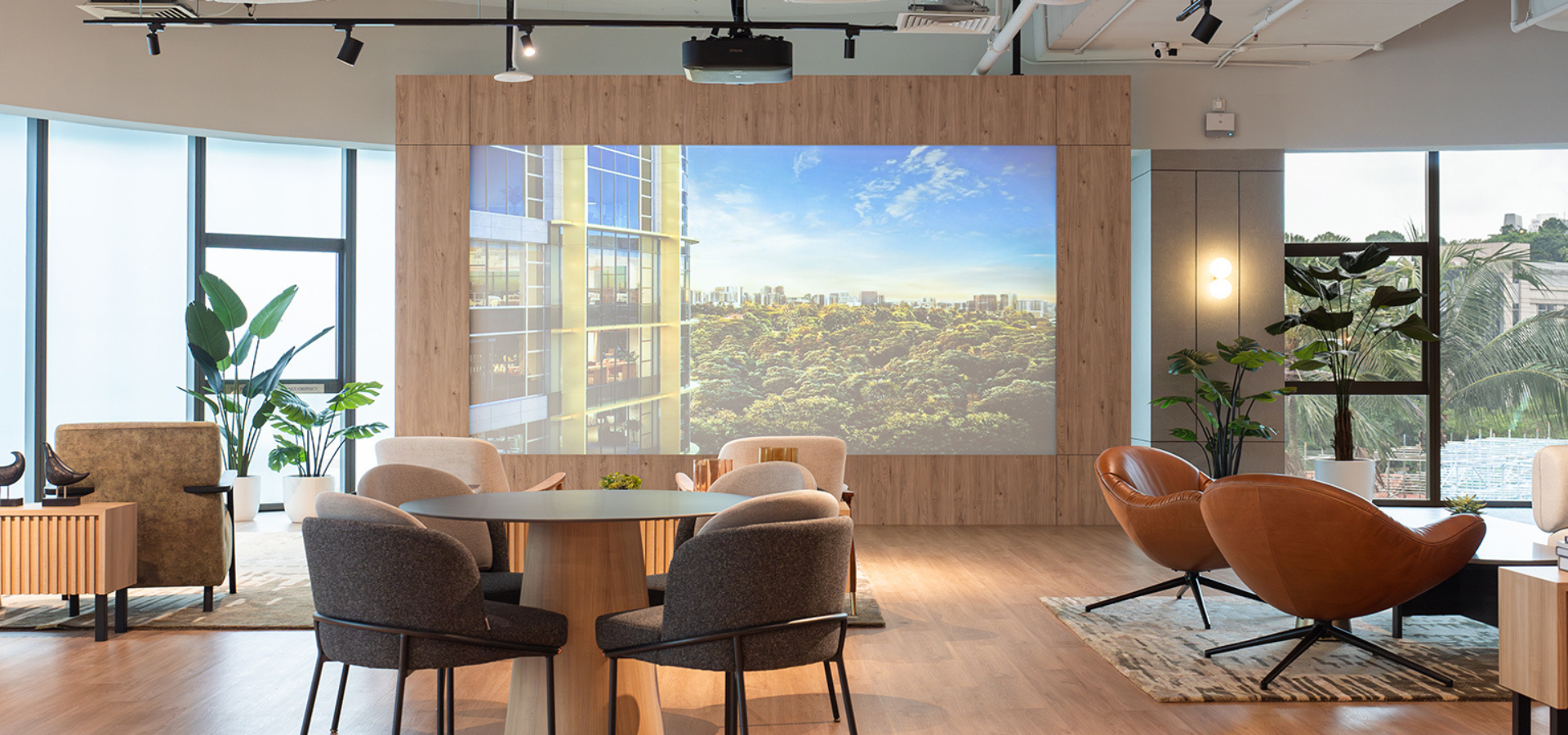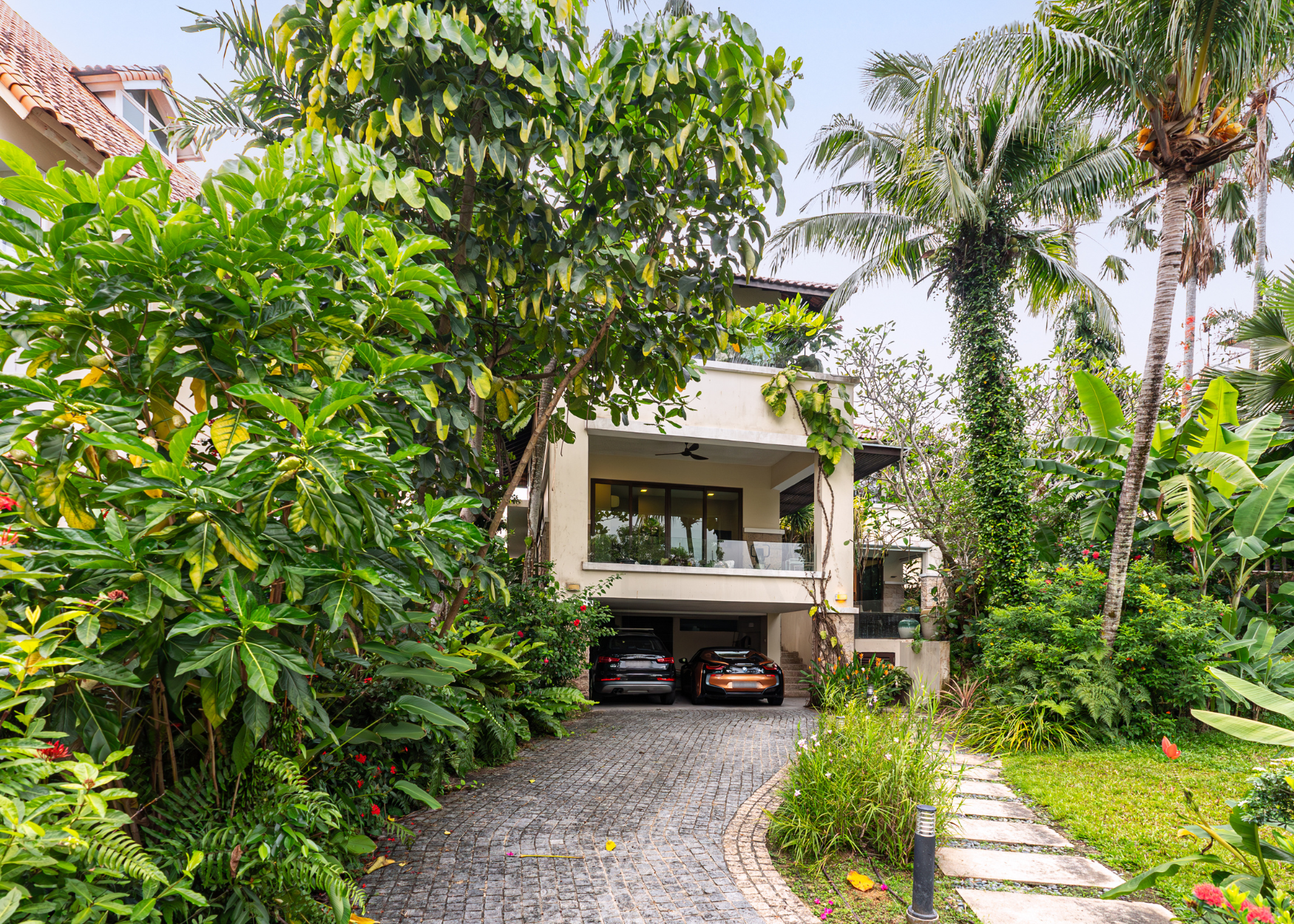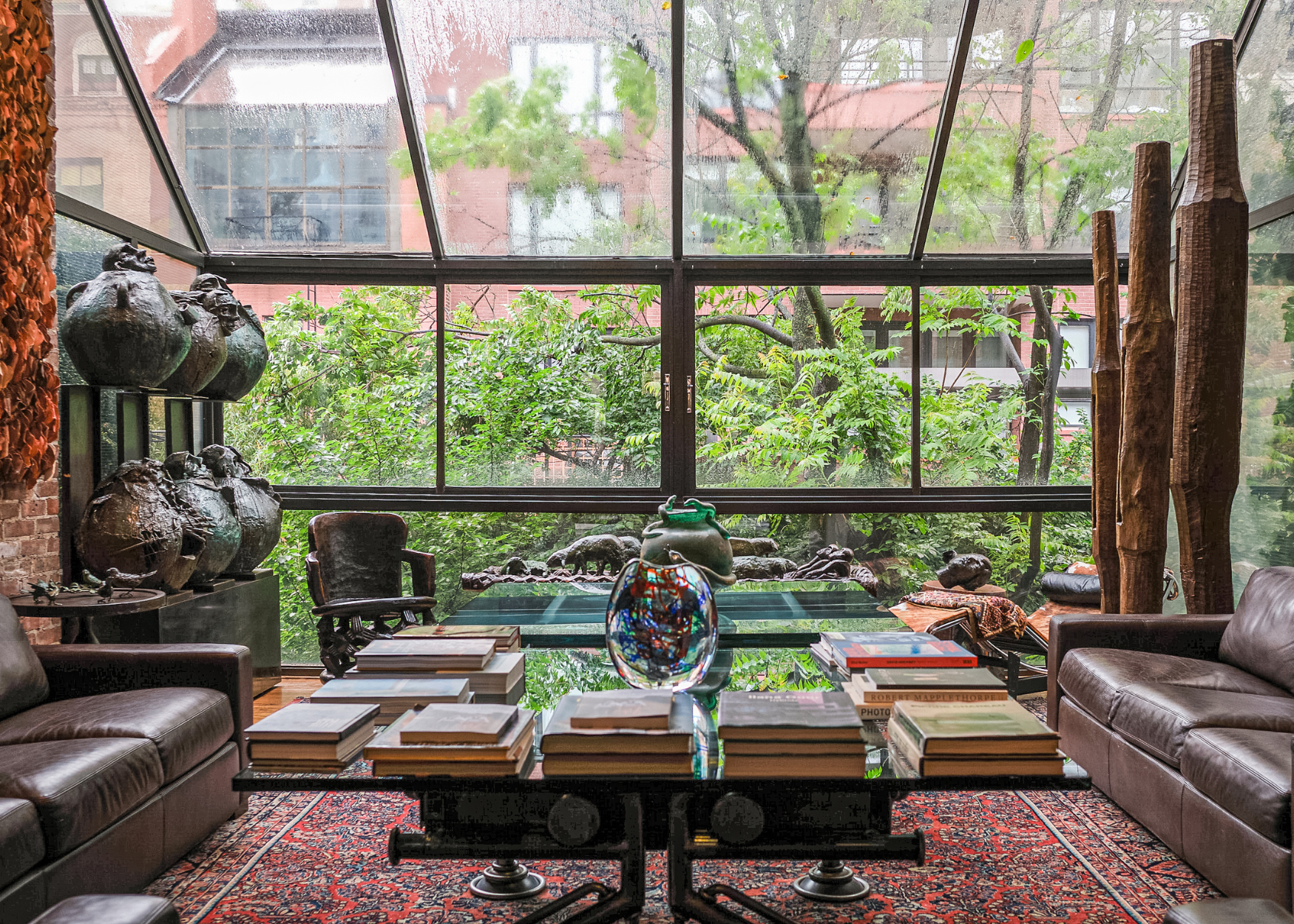The interview: TE Capital Partners’ Emilia Teo on the scarcity of freehold strata office titles in Singapore’s rising commercial real estate market
by Hamish McDougall
Photography by Jin Cheng Wong
Emilia Teo, managing director of TE Capital Partners, talks through the unique positioning of the investor-developer’s Visioncrest Orchard project, the growing demand for Grade A strata offices in Singapore, and the evolving landscape of the global commercial real estate market.
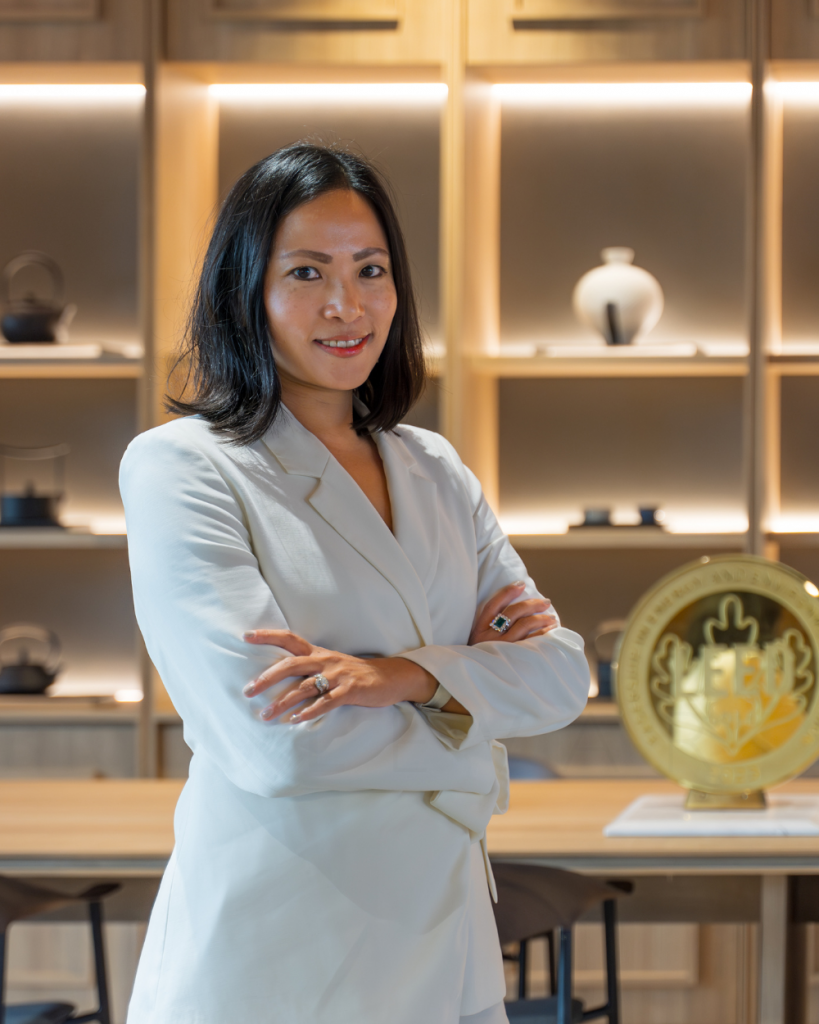
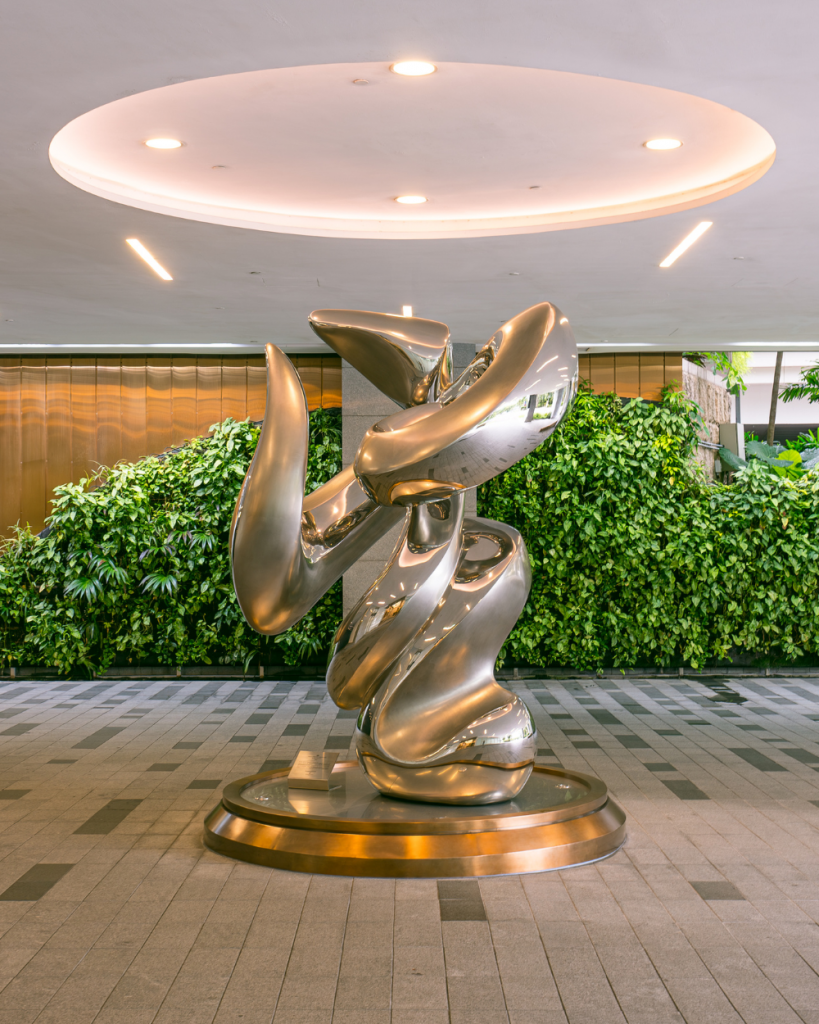
Left: Emilia Teo, managing director of TE Capital Partners. Right: ‘望’, Chinese calligraphy sculpture by Chua Boon Kee.
Boulevard: As both developers and investors, what first attracted you to the Visioncrest Orchard project?
Emilia Teo: The main thing that got us excited about this project is its location. Properties on Orchard Road rarely come up for sale, especially good quality, freehold offices. The surrounding area is hard to beat – you’re close to Somerset and Dhoby Ghaut MRT stations, and you’re in a prestigious, distinctive neighbourhood. We’re also adjacent to The Istana, and behind us is Oxley Road, a prime residential enclave. And the location is only going to get better over time, with significant enhancements planned by the government from 2025: Singapore’s Urban Redevelopment Authority (URA) announced in 2020 a master plan to transform the area into a ‘green oasis in the city’, with a six-kilometre green corridor running from the Botanic Gardens through Orchard Road and Dhoby Ghaut and stretching to the Singapore River. Istana Park will be expanded to around three times its current size. There will also be upcoming new developments that will inject more lifestyle, hotel, commercial, and retail offerings in the area.
We saw an opportunity to reposition this building in line with all of these new developments and create a product that would excite buyers. So, while we’re talking about its rare freehold status, there are also the enhancements in the locale that help to future-proof the asset.
There’s also access to lifestyle and entertainment facilities in the vicinity, as well as residential amenities next door at Visioncrest Residences. This includes access to swimming pools, tennis court, BBQ pavilions, indoor fitness gym, sauna and steam rooms.
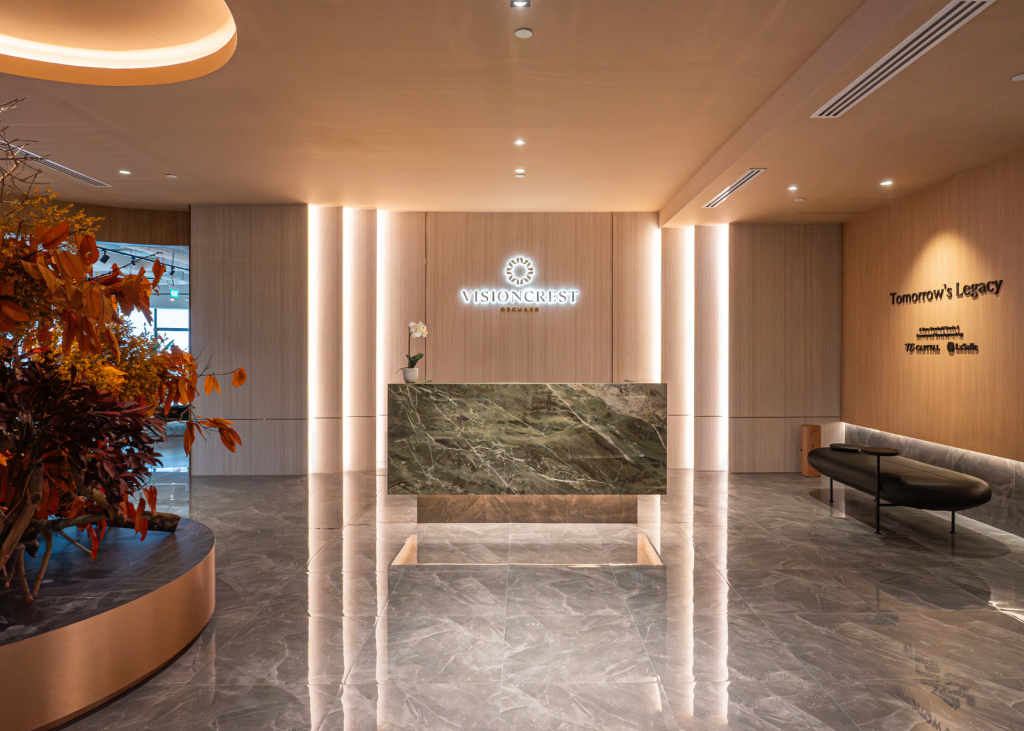
Entrance reception of Visioncrest Orchard sales gallery.
Blvd: Can you talk us through the positioning of the building?
Teo: When you arrive at the office floor, it’s clear that this is a Grade A building. The floor plates here average around 14,500 square feet, with regular-shaped column-free layouts, and the floor-to-floor height, at 4.3 metres, is higher than most office buildings. Looking out from the full-height glass panels, you’ll see vibrant greenery and the city skyline, featuring the iconic Marina Bay Sands. These aspects make the building stand out.
And compared to other strata offices, you’ve got a ground-floor drop-off point, which affords the owner and guests an elegant arrival at the office lobby – which we’ve designed with a warm and welcoming living-room setting. There are ample parking spaces as well, with each office floor being allocated ten carpark lots. These are the extra things that add to the property’s attractiveness.
Upon completion, the rejuvenation and enhancement programmes for the building is expected to establish a new benchmark for Grade A office buildings in the prestigious Orchard Road commercial hub. Additionally, we’ve set up quite a unique structure for sales at Visioncrest Orchard. Instead of a direct asset purchase, there is an opportunity for a buyer to purchase the shares in a BVI company and be the ultimate shareholder of the underlying asset. This allows buyers to save on the upfront costs of stamp duty and GST.
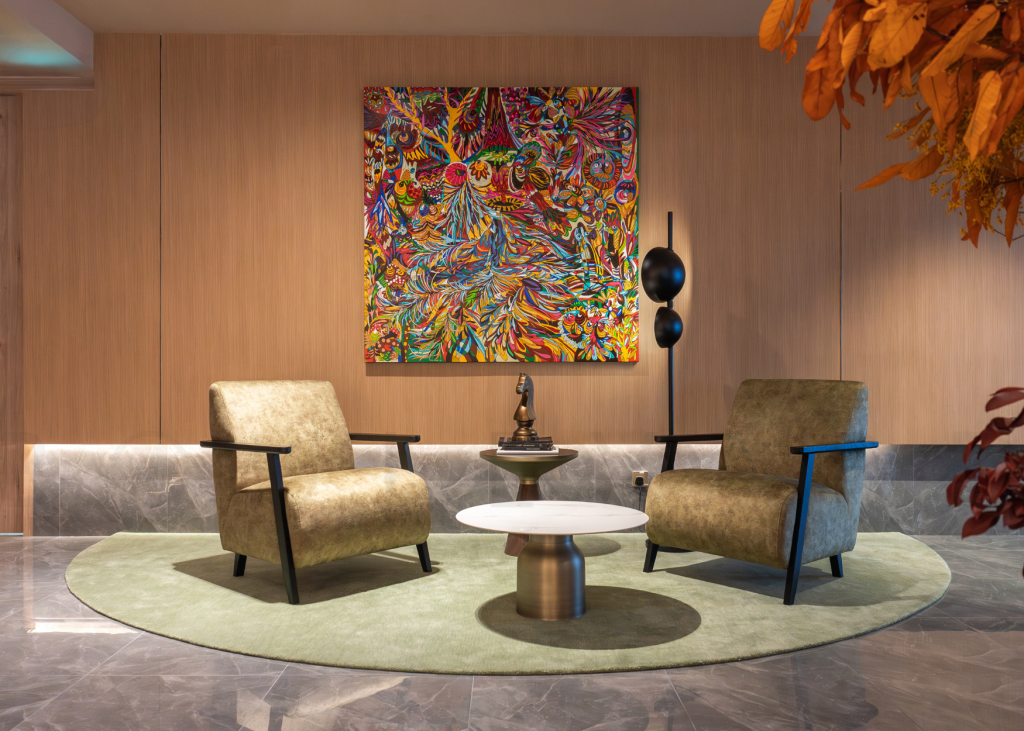
Welcome foyer at Visioncrest Orchard sales gallery.
Blvd: As developers, what insights to the property have you brought into its transformation process? What’s the vision ahead?
Teo: Aside from just having a beautiful workspace, we wanted buyers to feel more at home. So for the new lobby, we opted for a design with warm green tones which also complement the surrounding greenery, as if we’re stepping into the buyer’s own home.
Then, of course, other extensive asset enhancement initiatives have been planned, including updates to the building’s façade and public areas, as well as the introduction of new sustainability features, including the installation of more than 100 solar panels, and thermo-efficient solar film on office windows. Visioncrest Orchard is already a LEED Gold-certified building – and new end-of-trip facilities will also be added to encourage eco-friendly commuting among tenants. Additional green features also include electric vehicle chargers, advanced air purification and monitoring systems, such as MERV 8 filters and ultraviolet germicidal irradiation sterilisers in the air conditioning systems, as well as air purifiers in all lifts.
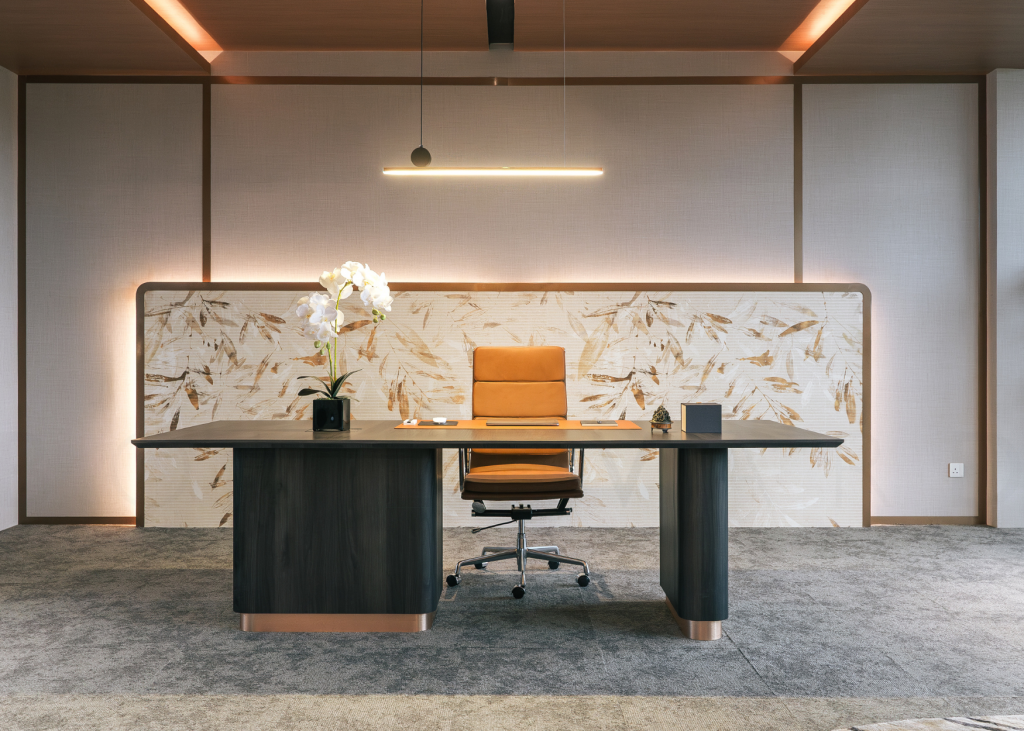
Executive office.
Blvd: How does all of this come together to create a product for a specific type of buyer? You’ve mentioned the future-proofing, the freehold status and the scarcity, which all contribute to its being a legacy asset. The building’s sustainable credentials also align with that. So, who do you see this appealing to?
Teo: We are looking at buyers who want an office, which can either be for their own occupation or for investment that is centrally located, high quality, and freehold, something they feel is a good store of value for the long term. We believe Visioncrest Orchard ticks all of these boxes. These buyers tend to be family offices or corporations who want to have their own office instead of renting, but they might not necessarily want to spend a few hundred million to own a whole building. So then, they are looking at owning maybe a floor or two, which would be at a more palatable quantum.
Blvd: Despite the global perception that commercial space is becoming less attractive, the numbers seem to indicate strong uptake and high occupancy levels. Where do you see the market trend heading in Singapore?
Teo: Singapore is a safe haven for a lot of investors and multinationals, who also want to have a presence in Asia. So, I think part of that is also driven by the fact that Singapore has really strong macroeconomic fundamentals. Also, the political environment is stable if you compare it with other global markets. That makes the country attractive and resilient in its stability in terms of the business environment – and there’s the ease of doing business here as well.
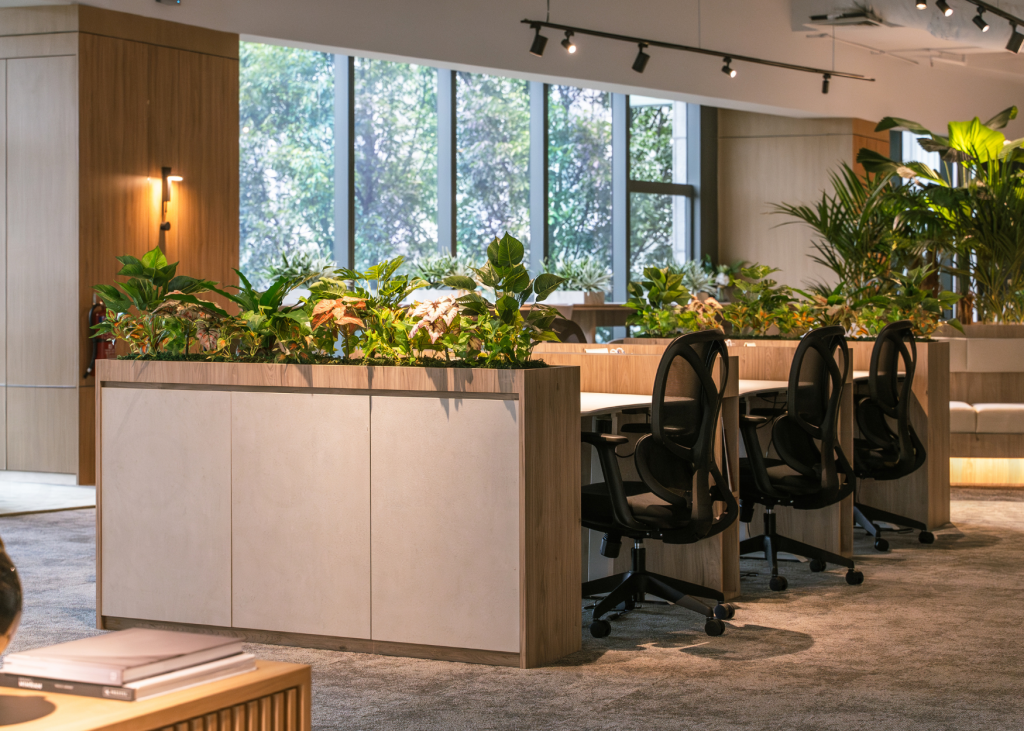
Visioncrest Orchard office space with full height glass windows.
Aside from the growth of multinational companies moving their offices to Singapore, there’s also a pool of family offices that has grown as well: there were about 400 family offices in 2020, and just in August 2024, the number went up to 1,650 family offices, in a mere short span of four years. This demonstrates that both multinational companies and private capital are bringing investment to Singapore, which helps drive demand in the office market. Sectors such as non-banking financial institutions, professional services, tech and government agencies are key drivers of this demand. Specifically for Orchard, there is an additional mix of tenants, which include retailers who have storefronts on Orchard Road. Many prefer to have their offices nearby, as it’s more convenient to access their retail locations.
In Singapore, the overall Central Business District (CBD) vacancy rate for 2024 is around 6%, while in Orchard specifically, it’s lower at about 1.5%. We’ve seen a 10% growth in rents over the past year, and there isn’t much new supply expected in Orchard over the next three years. As a result, I think strong demand and supply dynamics will also likely continue to drive further growth in the area.

Modern boardroom.
Blvd: Foreign investors, in particular, may not fully understand the scarcity of Grade A strata offices in this region. Could you also speak about the scarcity of strata titles and how that impacts the market?
Teo: The Urban Redevelopment Authority restricts strata subdivision of offices into smaller individual units within commercial developments located at prominent areas and in the CBD. So we feel that the demand is growing, while supply will be limited going forward. This creates the dynamics where an imbalance between demand and supply could drive the growth of capital values for office properties. And high-quality assets, such as Grade A offices, will benefit the most.
Blvd: How does the market in Singapore compare to other markets?
Teo: Singapore is very resilient through economic cycles. So while there may be short-term declines, the market quickly adjusts and then returns to a positive growth trajectory. For example, after the global financial crisis in 2008, prices dropped by about 25% in 2009. However, by 2010, they had rebounded to pre-crisis levels. Following that, the market continued on a positive growth trajectory.
At the same time, over the past two years, with interest rates rising, many markets saw significant price adjustments. However, Singapore didn’t experience much of a decline, despite the interest rate hikes. I think this reflects the perception among many property owners here that they are holding assets for the long term and believe these assets will retain their value.
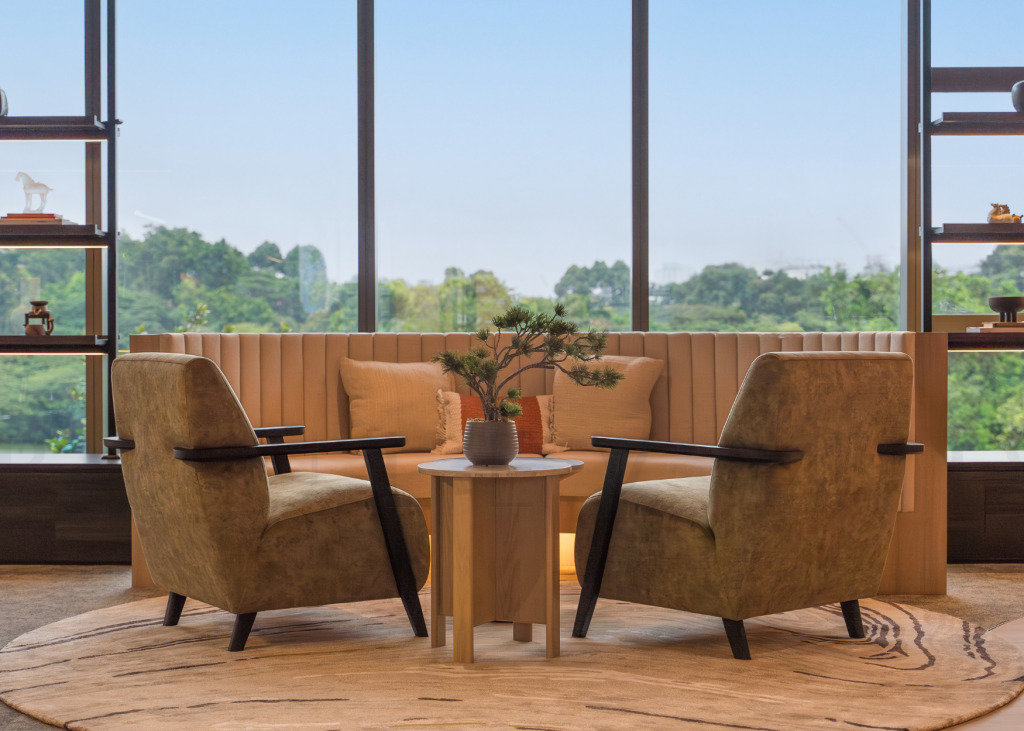
Executive office with views over Istana Park.
I think one difference between Singapore and other markets is that people in global markets perceive real estate as a trading asset, which means that when market forces change, the fundamentals also change. Then the owners tend to become more reactive and begin to sell their assets. So what it means is that the market cycles in other areas tend to have more volatility, while Singapore is probably more stable or has more of that upward trend.
Blvd: Where have you seen the interest coming from so far, in terms of both the types of buyers and the geographies?
Teo: Mainly from family offices and corporations, because they probably are more focused on long-term growth as opposed to short-term gain. Many of them live close to the Orchard precinct, especially the CEOs and principals. They want an office that’s close to home, so they don’t have to travel too far or deal with traffic in the CBD. It just makes sense for them to choose a location that’s more convenient.
Read next:
